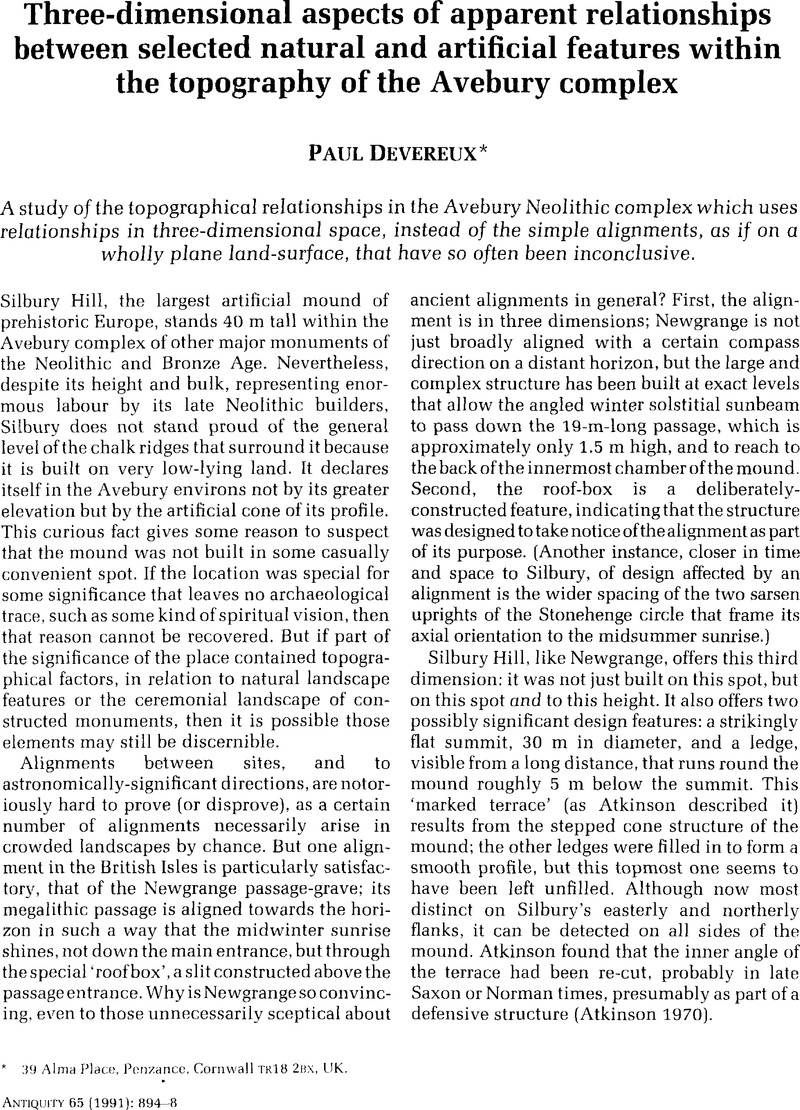Crossref Citations
This article has been cited by the following publications. This list is generated based on data provided by Crossref.
WHITTLE, ALASDAIR
1993.
THE NEOLITHIC of the AVEBURY AREA: SEQUENCE, ENVIRONMENT, SETTLEMENT and MONUMENTS.
Oxford Journal of Archaeology,
Vol. 12,
Issue. 1,
p.
29.
Pollard, Joshua
and
Gillings, Mark
1998.
Romancing the stones.
Archaeological Dialogues,
Vol. 5,
Issue. 2,
p.
143.
Chapman, Henry P.
and
Gearey, Benjamin R.
2000.
Palaeoecology and the perception of prehistoric landscapes: some comments on visual approaches to phenomenology.
Antiquity,
Vol. 74,
Issue. 284,
p.
316.
Lake, Mark W
and
Woodman, Patricia E
2003.
Visibility Studies in Archaeology: A Review and Case Study.
Environment and Planning B: Planning and Design,
Vol. 30,
Issue. 5,
p.
689.
Chapman, Henry P.
2003.
Rudston ‘Cursus A’– Engaging with a Neolithic Monument in Its Landscape Setting Using GIS.
Oxford Journal of Archaeology,
Vol. 22,
Issue. 4,
p.
345.
Blain, Jenny
and
Wallis, Robert J.
2006.
Pasts and pagan practices: moving beyond Stonehenge.
Public Archaeology,
Vol. 5,
Issue. 4,
p.
211.
Sims, Lionel
2009.
Entering, and returning from, the underworld: reconstituting Silbury Hill by combining a quantified landscape phenomenology with archaeoastronomy.
Journal of the Royal Anthropological Institute,
Vol. 15,
Issue. 2,
p.
386.
Marshall, Steve
Currie, George
and
Glastonbury, Pete
2010.
Investigation of a “Sun Roll” Effect in Relation to Silbury Hill.
Time and Mind,
Vol. 3,
Issue. 3,
p.
291.
García Sanjuán, Leonardo
Wheatley, David W.
Lozano Rodríguez, José Antonio
Evangelista, Lucy S.
González García, Antonio César
Cintas-Peña, Marta
Díaz-Guardamino, Marta
Nieto, Verónica Balsera
Montero Artús, Raquel
Kanz, Fabian
Rebay-Salisbury, Katharina
Jiménez Espejo, Francisco J.
and
Rivera Jiménez, Timoteo
2023.
In the bosom of the Earth: a new megalithic monument at the Antequera World Heritage Site.
Antiquity,
Vol. 97,
Issue. 393,
p.
576.



